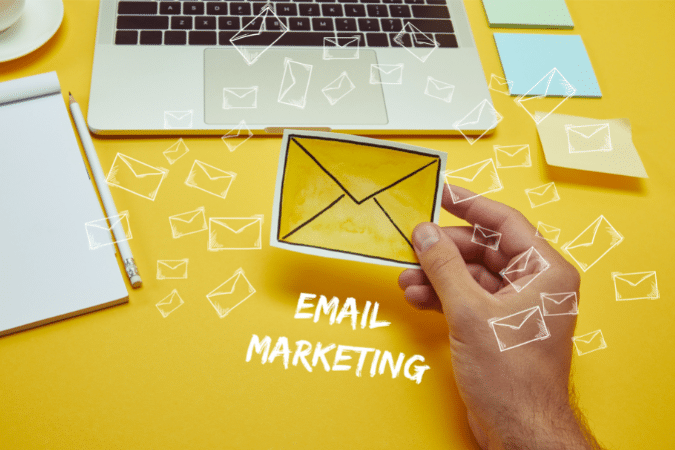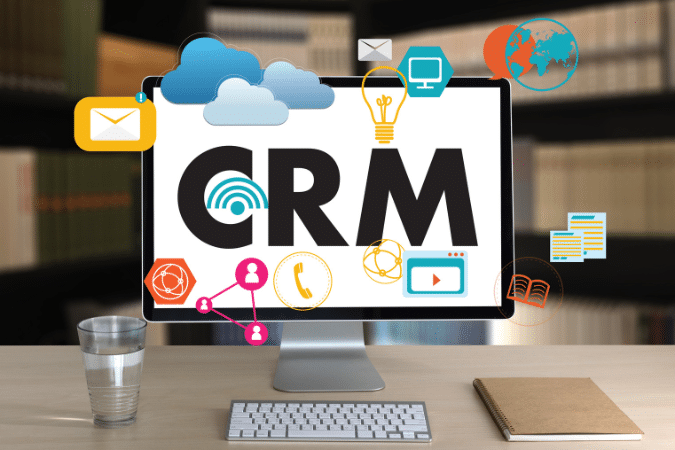
15 Ideal Marketing Ideas For Small Business Owners

Table Of Contents
-
1. Utilizing Social Media
-
2. Optimizing Your Website
-
3. Implementing Email Marketing
-
4. Running Advertising Campaigns
-
5. Executing Effective Content Strategies
-
6. Capitalizing on Local SEO
-
7. Creating Referral Programs
-
8. Leveraging Local Events and Experiences
-
9. Using Online Advertising Platforms
-
10. Nurturing Relationships With Customers
-
11. Connecting With Influencers
-
12. Utilizing Paid Search Platforms
-
13. Hosting Online Contests
-
14. Building an Online Community
-
15. Participating in Trade Shows
-
Bottom Line
Are you a small business owner looking for creative ways to bring in customers and increase your profits? Then, you’ve come to the right place! In this blog post, we’ll discuss 15 marketing ideas for small business owners to get on the map.
Many options are available, from using social media channels like Instagram and Facebook to joining local organizations or hosting workshops and events. Then, we’ll walk through how these strategies can work for you. So let’s get started!
1. Utilizing Social Media Channels – Ideal Marketing Ideas

Social media marketing is a potent tool for small businesses. With the right approach, you can use social media channels to build customer relationships, increase brand awareness, and even drive sales. So let’s explore ways small businesses can leverage social media.
Taking Advantage of Video Content
Video content is one of the most engaging forms of content on social media. Not only does it add visual interest to your posts, but it can also help you communicate a message more effectively than text-based social media posts alone.
Additionally, video content allows you to show off the human side of your business. People like connecting with others! Take advantage of platforms like Instagram Stories and TikTok when creating video content.
Posting Engaging and Creative Content
Regarding social media marketing, being creative is critical. You want your audience to be engaged with what you’re posting and stay interested over time.
Try experimenting with different types of content, such as polls, interactive quizzes, behind-the-scenes videos, and customer stories, or even create a hashtag that encourages user-generated content from customers. This will increase engagement and give you valuable insights into what your customers seek from your business.
Increasing Brand Awareness
Another great way to use social media is to create campaigns to increase brand awareness and recognition. Use platforms like Twitter or Facebook Ads Manager to run campaigns targeting specific audiences with tailored messaging that resonates with them.
This can be particularly effective if you have a limited budget – smaller businesses should focus on growing their brand before investing heavily in direct sales campaigns.
Leveraging Influencers and Community Leaders
Finally, leveraging influencers or community leaders effectively allows small businesses to expand their reach and visibility on social media platforms like Instagram or YouTube. Collaborate with influencers with an established audience in your industry.
This will help get the word out about your business while connecting you with potential customers who may not have heard about you otherwise!
These are just some ways small businesses can utilize social media channels for marketing – there are many more! The key takeaway is that crafting a thoughtful marketing strategy for each platform is essential for success in this space.
By leveraging influencers, creating engaging content, and taking advantage of video opportunities, small businesses can maximize their online presence and grow their business further than ever!
2. Optimizing Your Website – Ideal Marketing Ideas
As a small business, you know the importance of having a solid online presence. But how do you ensure you’ve optimized your website for success? There are several vital elements to consider when optimizing your website for SEO. Here’s an overview of what you should focus on to ensure your website is SEO-friendly and maximize its potential for small business marketing.
Creating an Easy-to-Navigate User Interface
The first element to consider when optimizing your website for SEO is creating an easy-to-navigate user interface. This means ensuring that the design of your website allows users to quickly and easily find what they are looking for.
Additionally, the navigation menus must be clear and concise. So visitors can quickly identify where to go. Finally, ensuring your logical content structure will help users quickly find their needs.
Providing Compelling Content
Content is vital when it comes to optimizing your website’s SEO performance. You want to provide relevant and valuable content to readers and engage them with compelling stories or visuals.
Additionally, including keywords in your content can help improve its visibility in search engine rankings and provide valuable information to potential customers about who you are and what services or products you offer.
Implementing SEO Strategies
Once your content is written and structured correctly, it’s time to start looking into implementing additional search engine optimization strategies such as link building or keyword research. Link building involves creating links between different pages on other websites that lead back to yours, which can improve rankings in search engine results pages (SERPs).
Additionally, keyword research can help determine which words or phrases people search for related to your business or product. Then, you can incorporate them into titles and descriptions of webpages on your site, blog posts, or other media outlets such as YouTube videos or podcasts.
Adding Quality Images and Videos To Your Site
Finally, adding quality images and videos to your site can also be beneficial when optimizing for SEO purposes because these types of visuals are attractive to readers, which helps keep them engaged longer on the page, increasing the chances of them taking some action, such as subscribing or making a purchase from the site. Additionally, including Alt Tags with images helps search engines understand what the image is about, which can also improve visibility in SERPs over time.
By understanding how each element works together – from design structure to keywords – businesses can create an effective marketing plan that will bring traffic and conversions over time if done correctly! And by implementing various strategies such as link building, keyword research, adding quality images/videos, etc., businesses have a better chance of seeing results that help their bottom line in the long run! So don’t wait – start optimizing today!
3. Implementing Email Marketing – Ideal Marketing Ideas

Email marketing is an incredibly effective tool for small businesses. It allows you to reach out to your existing customers directly and build relationships with them.
A well-crafted email campaign can be a great way to increase your customer base and boost sales. Here are four tips to help you create an effective email marketing campaign for your small business.
Crafting Engaging Subject Lines
Your subject line is the first thing people see when they get your emails. So it must be engaging and attention-grabbing. You want people to open the emails.
So you must ensure the subject lines are exciting and relevant. If you have multiple emails in a campaign, use numbered lists in the subject line (e.g., “3 Tips for Growing Your Small Business”) or ask questions (e.g., “How Can You Increase Sales This Month?”).
Personalizing Emails for Individual Customers
You should tailor emails for each customer. Personalization can help foster customer loyalty by making them feel valued and appreciated by the company.
For example, use their name in the subject line and body of the email, talk about their interests or previous purchases, or offer personalized discounts based on their purchase history. This will make them feel more connected to your business and more likely to open future emails from you.
Segmenting Your Contact List for Better Targeting
You don’t want to send the same email to all your customers. Instead, it’s better to segment them into different groups based on demographic information such as age, gender, location, etc., or even past purchase history and interests.
That way, you can send more targeted messages tailored specifically for each group on your contact list. This will help ensure that each person gets a relevant and interesting email, increasing the chances of opening it and taking action (such as purchasing).
Offering Special Deals and Promotions
One of the best ways to get people interested in opening your emails is by offering special deals or promotions. People love getting discounts or freebies. So why not use this as an incentive?
For example, you could offer discounts on specific products or services, free shipping, coupon codes for future purchases, or even surprise gifts sent directly to their doorsteps!
The possibilities are endless. Make sure whatever deal you’re offering is something that people would find valuable enough to take action on!
4. Running Advertising Campaigns – Ideal Marketing Ideas
As a small business, you know that it is essential to maintain visibility in the digital marketplace. You need to reach your target audience and stand out from the competition. One of the most effective ways to do this is through advertising campaigns on Google and social media platforms. With careful tracking and optimization, you can maximize your return on investment (ROI) with your ad spend.
Generating Ads on Google and Social Platforms
Creating compelling ads that speak directly to your target market is the first step toward a successful campaign. When setting up your ads, you must define who you want to reach and tailor the message accordingly. Pay attention to the wording of your ad copy and any visuals or videos you might use. These should be engaging and grab attention quickly. Also, consider using A/B testing for different versions of ads so you can see which ones perform best with your target market.
Tracking Performance with Analytics Tools
Once your ads are live, it’s time to track their performance. Many analytics tools allow you to measure success regarding impressions, clicks, conversions, and ROI. For example, Google Ads provides detailed insights into how customers interact with each ad and which campaigns have successfully driven traffic or sales. Some platforms also offer automated optimization tools that adjust bid prices based on user engagement with an ad to save money by targeting only those interested in your offering.
Optimizing Ads for Maximum ROI
Once you’ve gathered data about the performance of your ads, it’s time to optimize them for maximum ROI. This requires analyzing data and making changes based on what works best for your specific audience and goals. Try adjusting things like bid prices, targeting criteria, messaging, visuals, or even getting rid of underperforming campaigns altogether if necessary—whatever it takes to get more bang for your buck!
Advertising campaigns can be a powerful tool for increasing visibility and driving sales for small businesses.
- Generate compelling ads on Google and social platforms.
- Track their performance with analytics tools.
- Optimize them for maximum ROI.
You can ensure you get the most out of every dollar spent! When done correctly, investing time into understanding how advertising works pays off in spades. So don’t hesitate —to start running those campaigns today!
5. Executing Effective Content Strategies – Ideal Marketing Ideas

Content marketing is essential for small businesses that want to make a significant impact. It allows you to reach customers searching for products or services related to your company and establish yourself as a thought leader in your industry. But how can you effectively execute content strategies and ensure your content resonates with your target audience? Let’s look at some tips to maximize the value of your content.
Creating Valuable Content For Your Audience
The first step in creating an effective content strategy is ensuring your content is valuable and relevant to your target audience. This means understanding their needs, preferences, and interests. So you can create content that meets those criteria. To do this, start by researching the topics that interest them and writing about them in an informative and engaging way. Additionally, keep up with current trends and events related to your industry so you can stay ahead of the curve when providing relevant information.
Utilizing Repurposed Content To Increase Reach
Once you have created compelling content, don’t be afraid to repurpose it in different ways. For example, suppose you wrote a blog post about a new product launch. You could turn it into a video or infographic with updated visuals and share it on multiple channels such as YouTube or Instagram. You can also turn blog posts into podcast episodes or break them down into smaller chunks of text for social media posts. Repurposing content helps increase its reach while saving time on creating new content from scratch.
Promoting Content Through Different Platforms
No matter how unique your content is, it won’t do much good if no one sees it! Therefore, promoting every piece of content across all available platforms is essential. This includes:
- Social media channels like Facebook, Twitter, LinkedIn, and Instagram.
- Email campaigns.
- Paid ads.
- Influencer campaigns.
Don’t forget about SEO, either. Ensure each piece of content has keyword-rich titles and meta descriptions so search engines can pick up on them and rank them higher in search results pages (SERPs).
Analyzing Performance With Analytics Tools
Finally, don’t forget about analytics! Measuring the success rate of each piece of content is essential so you know what works best for your audience. Use analytics tools such as Google Analytics or Hotjar Heatmaps to track metrics like website traffic numbers, engagement rates (likes/shares/comments), bounce rates (how quickly users leave after visiting a page), average session duration (how long they stayed on a page), etc. So you can adjust future strategies based on what resonates best with users.
Content marketing is an invaluable tool when used correctly—but executing effective strategies isn’t easy! Thankfully, you can take steps to ensure success—from researching topics that interest your target audience to promoting every piece of content across multiple platforms—to maximize the value of your efforts for maximum impact on small business marketing efforts.
6. Capitalizing on Local SEO – Ideal Marketing Ideas

If you’re a small business owner, you know optimizing your digital presence is essential. Especially as people have become more reliant on the internet for local searches, having a solid local SEO strategy has become crucial. But where do you start? Here are four steps to help you capitalize on local SEO for your small business marketing.
Creating Location-Based Pages on Your Website
Creating location-based pages on your website helps search engines understand which areas you serve and allows them to provide more accurate results when someone searches for businesses like yours in their area. This will help improve your website’s ranking in local SERPs (search engine result pages). You can create location-based pages by including locations in page titles, URLs, and content and adding geo-targeted keywords throughout the page. Additionally, have contact information such as addresses and phone numbers on these pages.
Optimizing Google My Business Listings
Google My Business listings appear in search engine results when someone searches for something related to your business within a particular area. So you must claim and optimize them in addition to providing basic information about your business, such as location, hours of operation, and contact info. Google My Business listings allow users to leave reviews and ratings about your business. This makes optimizing these listings even more important. It increases visibility. In addition, it helps build credibility by giving potential customers an idea of what others think about your services or products.
Engaging With Local Influencers and Communities
When it comes to improving local SEO rankings, engaging with influencers and communities is critical. You can connect with influencers from or influence the areas you serve by joining relevant Facebook groups or following Twitter accounts focused on those areas. Additionally, find opportunities to collaborate with influencers or offer discounts for their followers—this will not only help increase brand recognition but also improve the visibility of your website in local SERPs by building backlinks from trusted sources.
Leveraging User Reviews and Rating
User reviews are essential for any small business looking to improve its online presence because they provide potential customers with reliable information about what they can expect from your services or products while also helping boost search engine rankings if they come from trusted sources like Google My Business listings (Google Business Profile) or Yelp profiles. Encourage customers to leave reviews after they’ve interacted with your business in some way—this could be after they purchase something from you or use one of the services you offer—and respond quickly if there is any negative feedback so that people know that customer service is a top priority for you.
7. Creating Referral Programs – Ideal Marketing Ideas
Referral programs are an excellent way to increase the reach of your small business. You can encourage customers to refer your business to their families and friends by offering incentives. Not only will this bring in more customers, but it will also boost your brand’s reputation and loyalty. Let’s take a look at some of the ways that small businesses can create successful referral programs.
Offering Sign-Up Credits and Discounts
One way to incentivize customers to refer your business is by offering sign-up credits or discounts when they refer someone new to it. This is a great way to reward existing customers for helping you spread the word about your brand while attracting new customers. Ensuring these rewards are attractive enough to convince people to share your referrals with their network is essential.
Incentivizing Customers To Refer Your Business
You can also incentivize existing customers to make referrals by offering rewards for each successful referral. This could be anything from discounts on future purchases, free products or services, gift cards, or cash-back rewards. Whatever incentive you choose should resonate with your target audience and encourage them to share their experience with others.
Connecting With Loyal Fans and Advocates
The best referral program isn’t just about offering incentives. It’s also about engaging with loyal fans and passionate advocates about what you have to offer. Take the time to build relationships with those who love your product or service so that they feel comfortable sharing their experiences with others in their network. This will go a long way in creating long-lasting relationships between you and potential new customers who may not have heard of your brand before.
Analyzing Performance With Analytics Tools
Finally, once you have implemented a referral program, you must track its performance using analytics tools such as Google Analytics or other platforms. These tools will help you monitor how many people are signing up through referrals and how much revenue is being generated from these referrals so that you can adjust accordingly if needed.
8. Leveraging Local Events and Experiences

When it comes to small businesses, there are countless ways to market your company. Traditional marketing tactics such as email campaigns and digital ads are always a safe bet, but what other options do you have? Local events and experiences offer a unique opportunity for small businesses to increase their visibility in their area. Here are some strategies for leveraging local events and experiences to market your business.
Partnering With Other Businesses in Your Area
Partnering with other businesses in your area is an excellent way to get the word out about your business. Consider working with complementary companies on a special promotion or event that will benefit both of you.
- For example, if you’re a restaurant owner, consider partnering with local businesses like a brewery or winery to host a tasting night where customers can sample food from your menu and drinks from the brewery or winery. This will give customers an incentive to try out both businesses at once while expanding your customer base at the same time.
Hosting Events to Connect With New Customers
Hosting events is another excellent way to connect with new customers in your area. Whether you’re hosting a workshop, seminar, webinar, or even just an informational meet-and-greet session, these events allow potential customers to learn more about what makes your business stand out. Ensure you advertise the event well in advance to maximize attendance and create buzz around it!
Participating in Local Community Celebrations
Local community celebrations are always a great way to get involved in your community while introducing yourself and your business to new potential customers. Participating in farmer’s markets, art festivals, charity walks/runs, and holiday parades are all great opportunities for small businesses seeking exposure. You can also sponsor these types of events, which allows you even more opportunities for brand visibility and networking with other like-minded business owners who may be able to refer new customers or collaborate on projects down the line!
9. Using Online Advertising Platforms – Ideal Marketing Ideas
As a small business, you may feel overwhelmed by digital marketing options. However, one of the most effective and efficient ways to reach your target audience is through online advertising platforms like Google Ads, Facebook Ads, and Twitter Ads. Let’s look at how to create ads on these platforms, track performance using analytics tools, and optimize for maximum return on investment (ROI).
Creating Ads on Google and Social Platforms
Before creating any ads on Google or social media platforms, developing a comprehensive understanding of your target audience is essential. Knowing who you are trying to reach with your ad campaigns can help narrow down which platform would best suit your needs. Once you’ve identified your target audience, you can create ads on the appropriate forum.
- For Google Ads, there are two main types of campaigns that you can run – search campaigns, where users type in an exact keyword or phrase into the search bar before they are shown relevant results, and display campaigns, where users are shown relevant ads based on their browsing history or interests.
- Each campaign includes different ad formats, such as text-based ads with one headline and two descriptions, extensions that provide additional information about your product or service, and video/image ads that allow for more interactive visuals. Utilizing these various ad formats will help catch the attention of potential customers.
Similarly, when creating advertisements for social media platforms, there are multiple ad types, such as a single image or video ad and carousel/collection ads that feature several images/videos within one post. Additionally, various targeting options are available across all platforms, from location to age/gender targeting. So businesses can ensure their ads are reaching the right people.
Tracking Performance With Analytics Tools
It’s not enough to create an advertisement – businesses need to understand how their campaigns have been performing over time to make necessary optimizations to maximize ROI.
Fortunately, many free analytics tools are available at our disposal, such as:
- Google Analytics, which allows users to track website traffic data
- Facebook Insights, which provides detailed information related to engagement metrics
- Twitter Analytics, which offers insights into tweet activity data.
Through these analytics tools, businesses can gain insight into their campaigns’ performance and which areas may require further optimizations or changes to succeed.
Optimizing Ads For Maximum ROI
Once a business has tracked its performance using analytics tools, it’s time for optimization! Optimization involves testing different elements of an ad, such as its design or copy, to determine what works best with its target audience so that businesses can maximize ROI from their campaigns. Common tactics used during optimization include A/B testing – testing two versions of an ad against each other to identify which one performs better – and split testing – testing several variations of an ad against each other at once to identify the most successful version overall. Testing different aspects of an advertisement help businesses hone in on what works best with their target audience so they can focus on those elements in the future.
10. Nurturing Relationships With Customers – Ideal Marketing Ideas

The world of small business marketing is more competitive than ever before. As a result, you must nurture relationships with current and prospective customers to ensure that your business stands out from the competition and connects with potential customers. Several important ways exist, including offering customer loyalty programs, responding quickly to customers’ needs, leveraging user-generated content, and supporting local causes and charities. Let’s look at each of these small business marketing strategies.
Offering Customer Loyalty Programs
A customer loyalty program is an effective way to reward customers for their continued support of your business. This program encourages repeat purchases by offering rewards or discounts for loyal customers. It also helps you understand what your customers value regarding products or services. Loyalty programs can be as simple as a “buy ten get one free” punch card or as sophisticated as an online rewards program that offers points redeemable for discounts or free items.
Responding Quickly to Customers’ Needs
Customers expect prompt responses when they reach out with questions or comments about your business. That is why it is essential to have a system that allows you to respond quickly and efficiently to customer inquiries. This could be as simple as having someone on staff dedicated specifically to customer emails or calls or using a service such as Hootsuite that monitors social media accounts for mentions of your brand so you can respond quickly when necessary.
Leveraging User-Generated Content
User-generated content (UGC) provides valuable feedback from real people who have used your products or services. Leveraging UGC allows you to showcase your brand’s success stories while building trust among potential customers who may still be uncertain about purchasing from you. You can use UGC in various ways, such as sharing it on social media platforms, displaying it on your website, or featuring it in email marketing campaigns.
Supporting Local Causes and Charities
Finally, supporting local causes and charities is another great way to nurture customer relationships while giving back to the community. This could involve donating proceeds from sales during specific periods, hosting fundraising events at your store location, launching campaigns with particular causes in mind (such as breast cancer awareness), or simply donating money directly to organizations/causes that are important to you and your target audience(s). No matter how you give back, this strategy will help show potential customers that your business cares more than just making money—you also care about making a difference!
Nurturing customer relationships should be an integral part of any small business marketing plan if the goal is long-term success. By offering customer loyalty programs, responding quickly when necessary, leveraging user-generated content, and supporting local causes/charities wherever possible, businesses can build trust among current and prospective customers while demonstrating their commitment to providing excellent service—all essential components of successful small business marketing!
11. Connecting With Influencers – Ideal Marketing Ideas
Influencer marketing is one of the best ways to build brand awareness and engage with potential customers. Influencers have a large social media following and can help you reach your target audience. Leveraging influencers can be an invaluable tool for small businesses, allowing them to compete with larger companies. But how do you find the right influencers for your niche? And once you find them, what’s the best way to craft engaging campaigns? Let’s look at how small businesses can use influencer marketing to their advantage.
Finding the Right Influencers for Your Niche
The first step to successful influencer marketing is finding the right people to partner with. Look for influencers in your target market with relevant content and a sizable following. The key is to find people who have an authentic connection with their followers—you want to ensure that their message resonates with your target audience to translate into more sales or leads from their posts. You can use tools like Buzzsumo or Followerwonk to search for influencers in your niche based on keywords, location, or language.
Crafting Engaging Campaigns to Reach New Audiences
Once you’ve found some potential partners, it’s time to create creative campaigns that will engage and excite new audiences. Your goal should be to create meaningful content that captures attention while delivering value. This could range from hosting sponsored giveaways or creating promotional videos featuring the influencer and their followers. It’s also important that all campaigns are aligned with your brand message, tone, and values. So they authentically represent your company and its products or services.
Analyzing Performance With Analytics Tools
Tracking performance is essential when running any digital marketing campaign, including those involving influencers. To assess ROI (return on investment) accurately, you need reliable data about how each campaign performs regarding follower growth, engagement rates, impressions, etc. Many analytics tools are available today, such as Sprout Social or Hootsuite Insights, which allow you to measure performance across multiple metrics to make informed decisions about future campaigns based on results from previous ones.
12. Utilizing Paid Search Platforms – Ideal Marketing Ideas

For small businesses, marketing is a crucial component of success and growth. There are many ways to reach potential customers, but one of the most effective methods is through paid search platforms like Google Ads and social media platforms like Facebook Ads Manager. With the right strategies, paid search can be a powerful tool for generating leads and driving conversions.
Generating Ads on Google and Social Platforms
The first step in leveraging paid search platforms is creating advertisements that draw potential customers’ attention. When designing an ad on Google or a social platform, it’s essential to keep your message clear and concise while providing enough information to draw interest. You’ll also need to ensure that your ad meets the guidelines set forth by the platform you’re using. This means writing ad copy that follows the rules of headline length and character count while ensuring words are spelled correctly on Google Ads.
On social media platforms like Facebook Ads Manager, it’s equally important to follow all guidelines when creating an advertisement to get approved quickly.
Tracking Performance With Analytics Tools
Once you have created your ads and launched them on a paid search platform, tracking their performance over time is essential. This will help you determine which ads are successful and require improvement or optimization. To do this effectively, you should leverage analytics tools such as Google Analytics or Facebook Insights to measure key metrics like clicks, impressions, cost per click (CPC), cost per impression (CPI), click-through rate (CTR), conversion rate (CVR), the total cost of acquisition (TCA), return on investment (ROI), etc. By tracking these metrics over time, you can gain valuable insights into how well your campaigns are performing so that you can make necessary changes or optimizations where needed.
Optimizing Ads for Maximum ROI
Finally, optimizing your ads for maximum return on investment (ROI) is essential. To do this effectively, you need to understand which elements of an ad contribute most significantly towards generating leads or conversions. Some key features include ad copywriting techniques such as:
- Headlines and call-to-action phrases
- The imagery used in the ad itself
- Targeting strategies such as demographic targeting or location targeting
- Bidding strategies such as manual bidding versus automated bidding
- Placement strategies such as display networks versus search networks
Small businesses can maximize their returns from paid search campaigns by significantly understanding which elements impact ROI and optimizing them accordingly.
13. Hosting Online Contests – Ideal Marketing Ideas
Hosting an online contest can be an excellent way for small businesses to engage with their customers and build a strong following. A compelling online contest should include creative content, valuable prizes to entice participants and analytics tools for tracking participation. Here’s how to create the perfect online contest that will help promote your business.
Crafting Engaging and Creative Content for Your Contest
Thinking outside the box and finding something that will grab people’s attention is essential when creating engaging content. You want to ensure your content is unique and exciting so that people will want to participate in your contest. Consider using videos or interactive games as part of your content—something fun but also related to your business in some way. The more creative you can get with your content, the better your chance of making an impression on potential customers.
Offering Valuable Prizes to Entice Participants
Offering valuable prizes is essential if you want people to participate in your online contest. Of course, offering a cash prize or a gift card is always a great incentive. Still, you could also consider offering something unique, like a discount or exclusive access to new products or services. Whatever you decide, ensure it’s worthwhile so that people will be encouraged to participate in the contest.
Tracking Participation With Analytics Tools
Finally, it’s essential to track participation with analytics tools so that you can measure the success of your online contest and refine future strategies accordingly. For example, it would be best to use tools like Google Analytics or Hootsuite Insights to monitor activity on social media sites like Twitter, Facebook, and Instagram to gain insights into what content resonates best with audiences. This information can be invaluable when crafting campaigns and promotions for small business marketing efforts.
Hosting an online contest can be an effective small-business marketing strategy if done correctly. Creating engaging and creative content, offering valuable prizes as incentives, and tracking participation through analytics tools can create the perfect campaign for promoting your business and gaining new customers. With some careful planning and effort put into hosting an online contest for small business marketing purposes, you can see excellent results in no time!
14. Building an Online Community – Ideal Marketing Ideas

As a small business owner, you know that having an online presence is essential to success in today’s digital age. Although having a website is the first step, it’s not enough to have a website. Engaging online communities and fostering relationships with potential customers is vital in gaining visibility and building brand loyalty. Here are some tips on how to build an online community for your small business marketing.
Creating Interactive Content for Your Audience
Creating content that resonates with your audience is critical to engaging with them and building relationships. It should be informative, creative, original, inspiring, and entertaining. Consider creating blog posts about topics related to your industry or product or even lifestyle posts that can connect with your audience on a personal level. You can also make tutorials or webinars offering helpful advice and tips for your products or services.
Utilizing Social Media Platforms to Reach New Customers
Social media platforms such as Facebook, Instagram, Twitter, Pinterest, YouTube, etc., are powerful tools businesses of all sizes use to reach new customers and engage with existing ones. Take advantage of these platforms by sharing interesting content, such as photos and videos that showcase your products or services in action and behind-the-scenes content from your business operations. This will give your audience more insight into who you are as a company and help them become more familiar with what you stand for.
Monitoring Community Engagement With Analytics Tools
Analytics tools such as Google Analytics can provide invaluable insights into how people interact with your online content—how many viewers you have per day, week, and month, which countries they come from, what type of device they use, and what pages they visit. It allows you to track progress and make improvements where necessary. This will enable you to create targeted campaigns tailored to customer segments based on their demographics or behavior patterns.
Building an online community takes dedication, consistency, enthusiasm—and, most importantly—knowing who your target market is and what makes them tick. Then, by creating interactive content explicitly tailored towards them, utilizing the right social media platforms to reach new customers, monitoring engagement through analytics tools, and staying consistent in terms of the quality of content being produced—you can establish yourself as an authority in the industry while strengthening relationships with potential customers at the same time!
15. Participating in Trade Shows – Ideal Marketing Ideas
Trade shows are an invaluable way for small businesses to promote their products and services, increase brand recognition, and create valuable connections with potential customers. Whether you’re attending a large-scale event or a local expo, there are specific steps you should take to ensure that your business can maximize the opportunities these events offer. These steps include creating an effective booth display, engaging with customers and prospects, and tracking ROI from your participation.
Creating an Effective Booth Display
The key to making sure that your booth stands out amongst the competition is in the presentation. Your booth needs to be eye-catching and inviting so that people stop by to learn more about what your business has to offer. When designing your display, consider how to make it unique and memorable. For example, consider using bright colors or special lighting techniques to draw attention.
Utilize large banners or signage with clear messaging that will leave a lasting impression on visitors. You may even want to incorporate fun activities such as giveaways or contests to engage attendees and bring them back multiple times throughout the day.
Engaging With Customers and Prospects
It’s important to remember that trade shows are not just about getting people’s attention. They’re also about building relationships with potential customers. Therefore, ensure friendly staff members can answer questions and provide helpful information about your products or services. Also, it would be best if you took some time at the beginning of each day to establish goals for engagement so that everyone involved knows what success looks like at the end of the day. This will help keep everyone motivated throughout the event and ensure that those goals are met once it’s over.
Tracking ROI From Your Participation
Once the trade show is complete, it’s time to measure its success by tracking ROI from your participation (Return On Investment). This includes measuring how many leads were generated, and sales were made during or after the event. It’s also wise to track customer feedback from existing clients and prospects to understand how to improve in future events.
By taking advantage of analytics tools such as Google Analytics or Salesforce CRM, you can monitor data collected from digital campaigns associated with trade show marketing efforts to understand better which tactics have been most successful in reaching target audiences online before attending any trade show events.
Participating in trade shows is a highly beneficial marketing strategy for any small business looking to grow its reach while connecting with current and potential customers. It takes careful planning when designing booth displays, engaging with customers/prospects, and tracking ROI post-event. However, once implemented correctly, this strategy can pay off big time! So don’t miss out on this great opportunity – start planning today!
Bottom Line
Overall, marketing for small businesses can be difficult and time-consuming, but it is worth it to invest in. With these 15 excellent marketing ideas, small business owners can easily create a sustainable and successful marketing campaign to attract new customers and grow their business. Please read our other blogs for more marketing and small business growth information.





